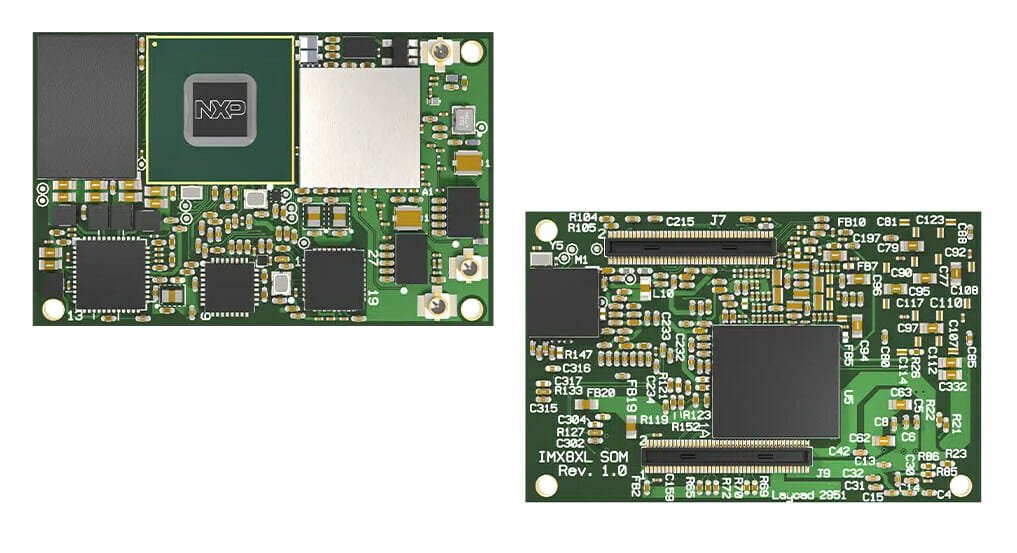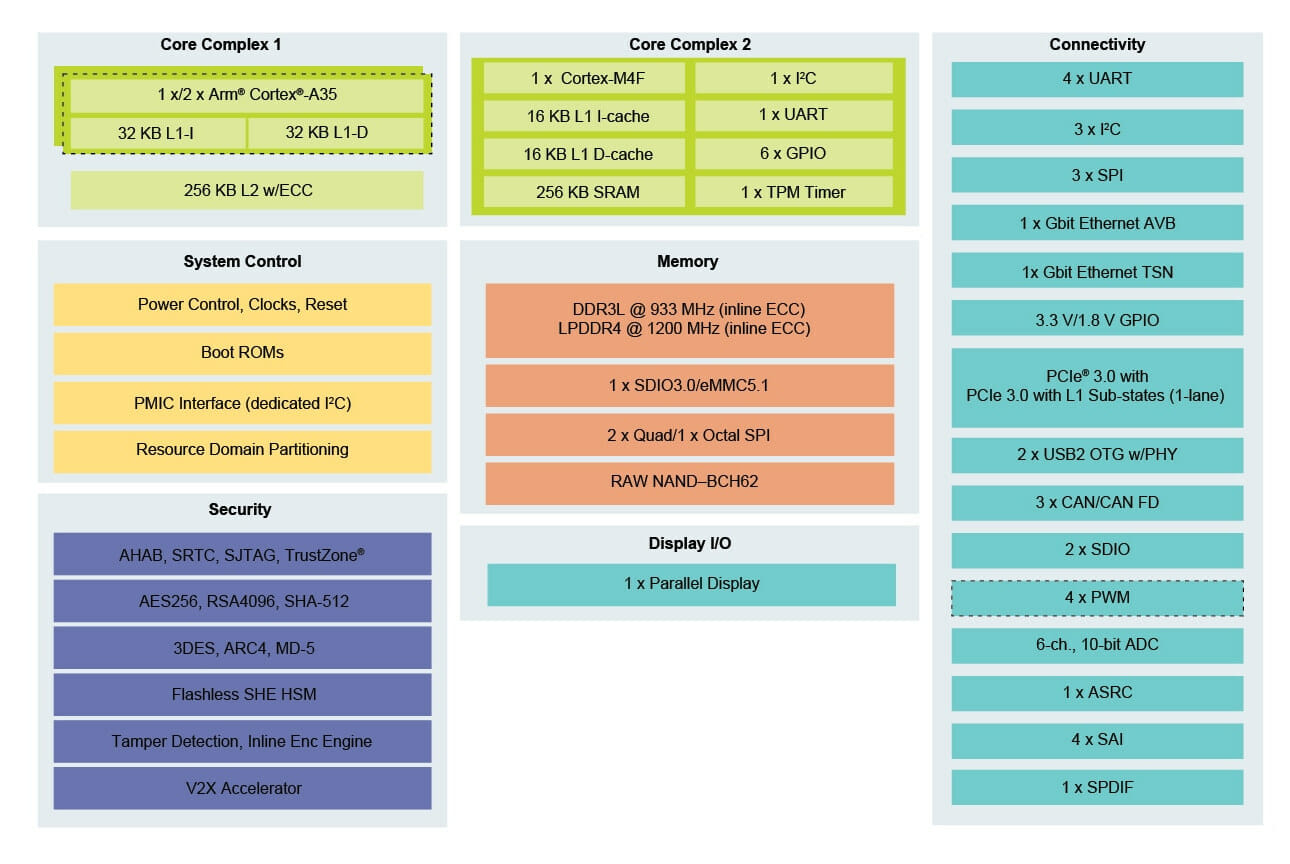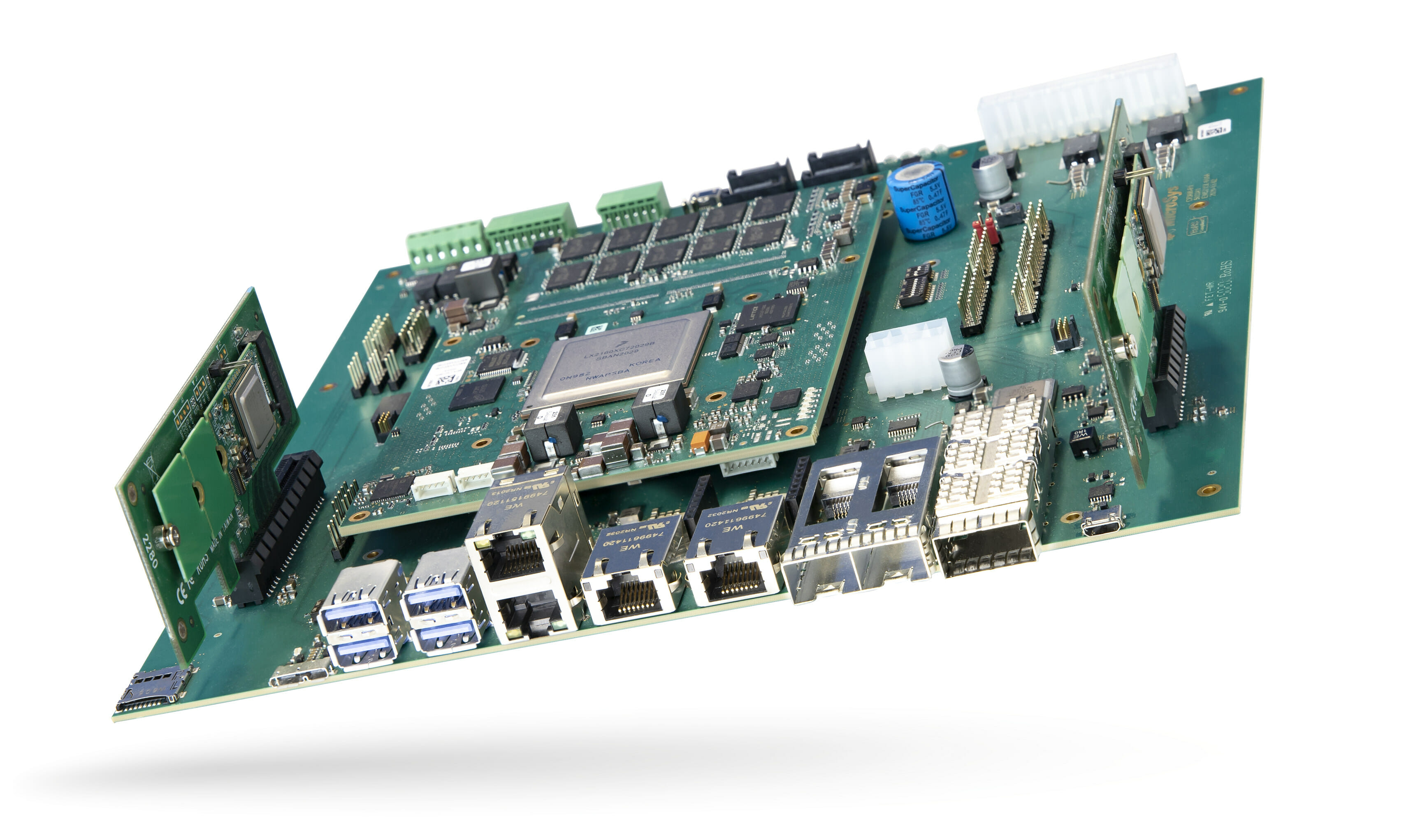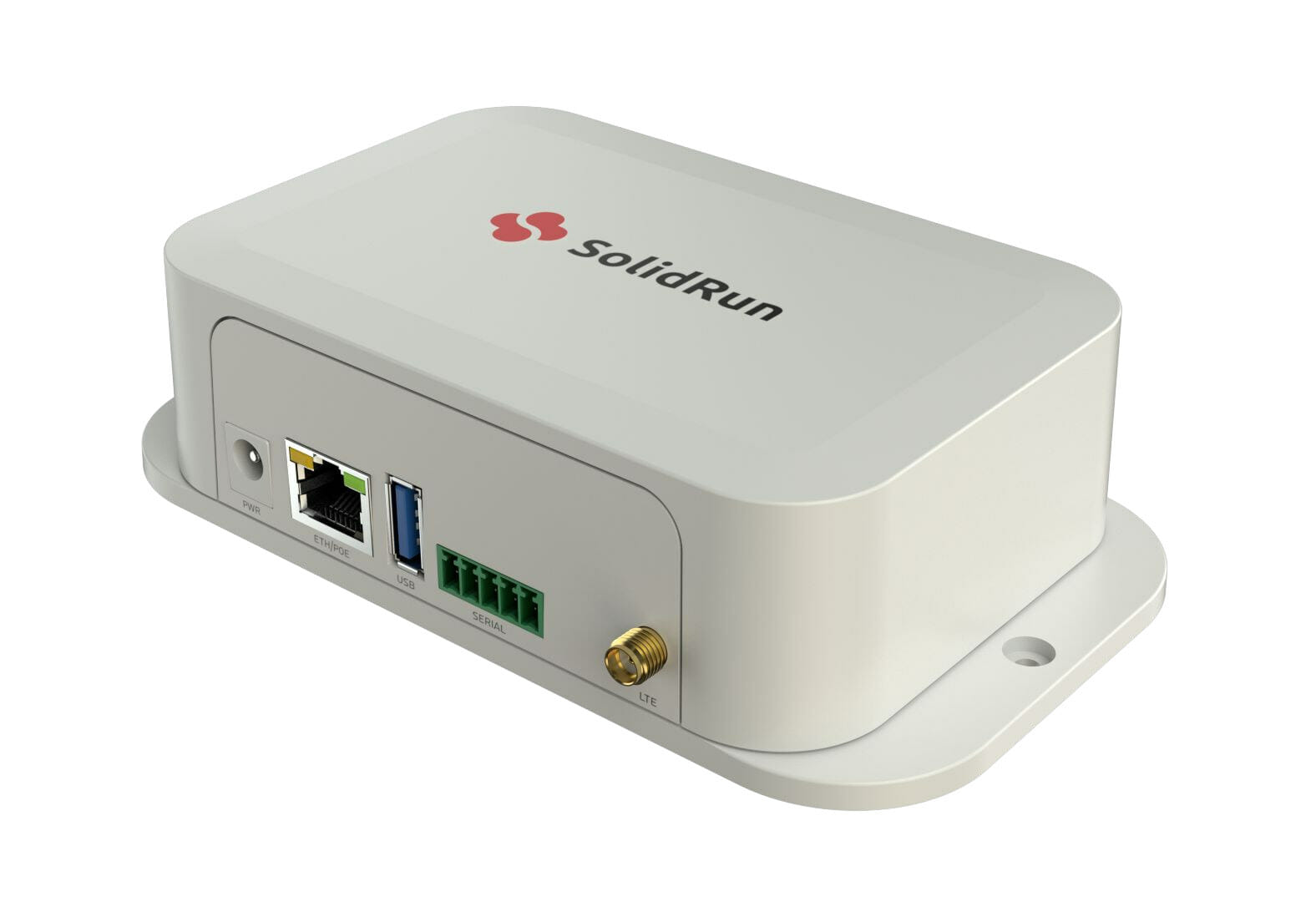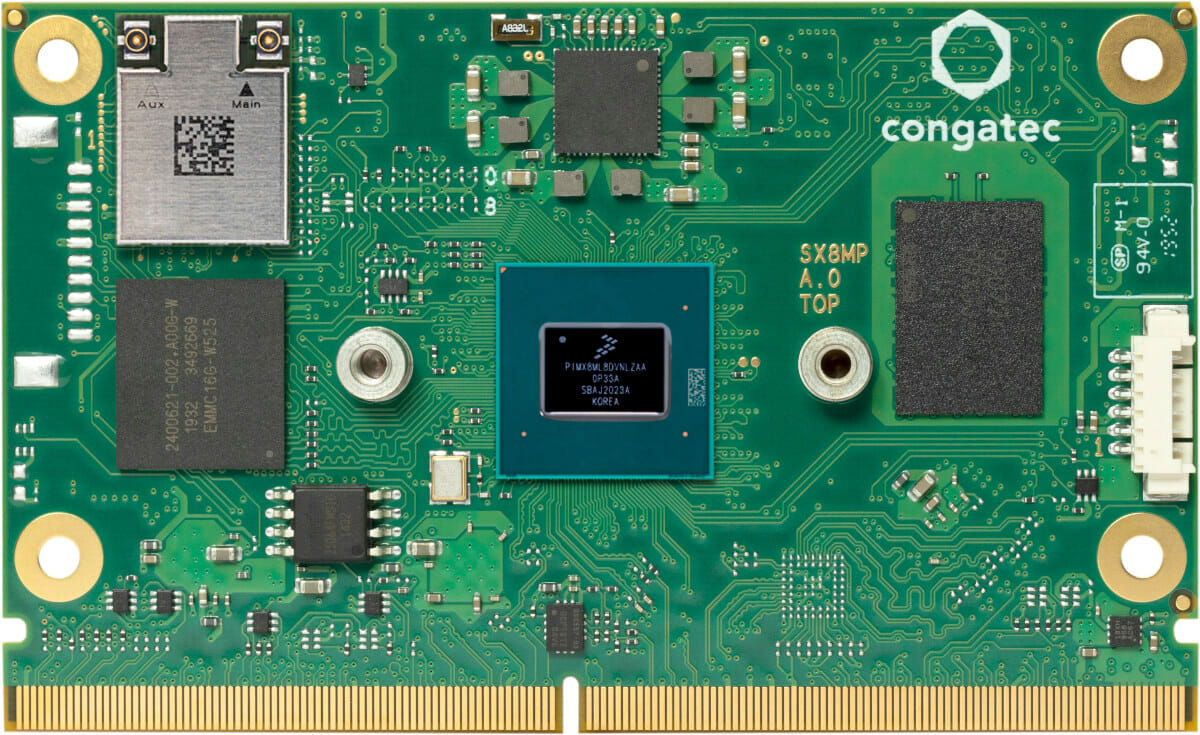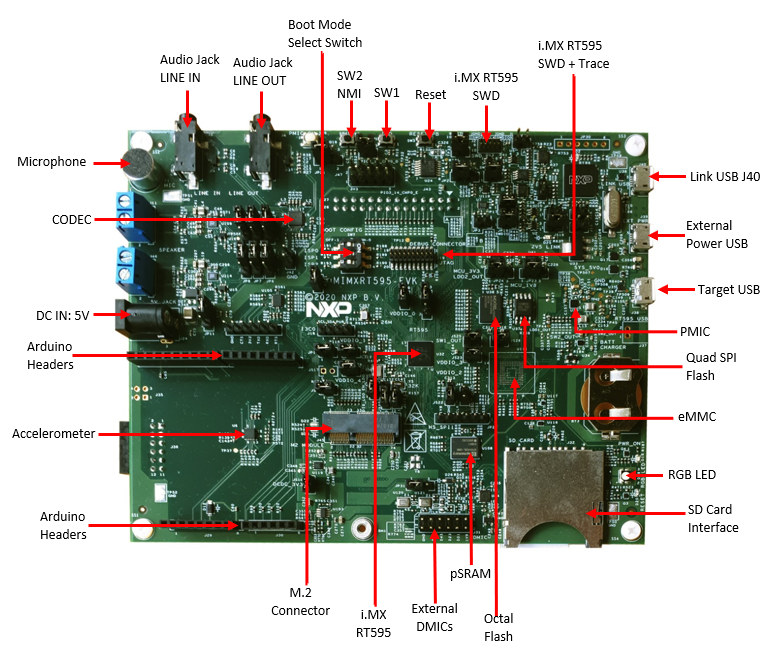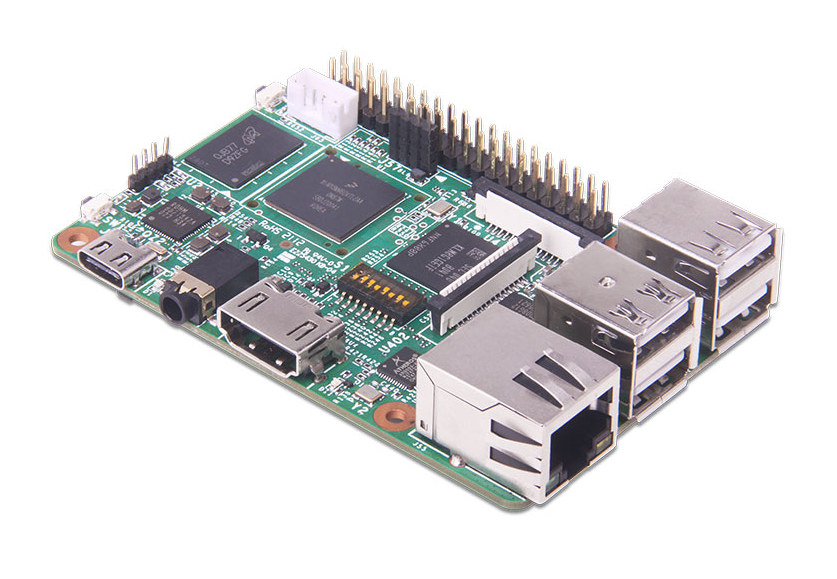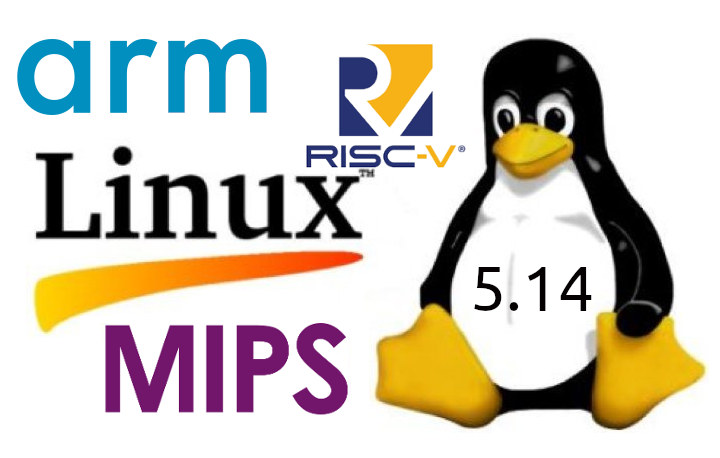The GPU-less NXP i.MX 8XLite Cortex-A35/M4 SoC was just announced earlier this month for V2X and IIoT applications, and now SolidRun unveiled the first module based on the new processor with the “i.MX 8XLite System-on-Module”. Also equipped with a RoadLINK SAF5400 safety modem, SolidRun’s Mini SoM targets vehicle telematics, vehicle-to-vehicle (V2V) and vehicle-to-infrastructure (V2I) communications, road infrastructure connectivity, and industrial equipment. SolidRun i.MX 8XLite specifications: SoC – NXP i.MX 8XLite single or dual-cire Cortex-A35 processor @ 1.2 GHz, with Cortex-M4F real-time core System Memory – 1GB LPDDR4 with inline ECC Storage – 8GB eMMC flash Ethernet – NXP TJA1100 100BASE-T1 Automotive Ethernet transceiver Wireless NXP RoadLink SAF5400 DSRC/802.11p (V2X) single modem dual antenna (u.FL connectors) GNSS module for GPS 2x Hirose DF40 board-to-board connectors with: Storage – SD/MMC card, PCIe SSD Ethernet – 100BASE-T1 Automotive Ethernet USB – 2x USB 2.0 PCIe – 1x PCIe Low-speed interfaces – 2x I2C, […]
GPU-less NXP i.MX 8XLite Cortex-A35/M4 SoC is aimed at IIoT & V2X applications
NXP i.MX 8XLite SoC is a cost-optimized version of NXP i.MX 8X automotive processor with up to two Cortex-A35 cores, one Cortex-M4F real-time core, and in a GPU-less configuration since it lacks the Vivante GPU found in i.MX 8X family. The headless processor also comes with dedicated Hardware Security Modules (HSM) to enable telematics solutions, vehicle-to-everything (V2X) applications including vehicle-to-vehicle (V2V) and vehicle-to-infrastructure (V2I) solutions, road infrastructure connectivity, as well as IIoT applications such as industrial equipment and building automation. NXP i.MX 8XLite key features and specifications: Processor complex 1x or 2x Arm Cortex-A35 cores @ up to 1.2 GHz with 256KB L2 cache with ECC 1x Arm Cortex-M4F core for real-time processing Memory I/F – 16-bit DDR3L-1866 and LPDDR4-2400 with ECC protection Storage I/F 1x FlexSPI for fast boot from SPI NOR flash 2x SD 3.0 card interfaces 1x eMMC5.1/SD3.0 NAND (62-bit ECC support) Networking – 1x Gigabit Ethernet […]
miriac AIP-LX2160A 16-core embedded platform delivers up to 130 TOPS with 5 Hailo-8 modules
MicroSys Electronics miriac AIP-LX2160A embedded platform combines a 16-core Cortex-A72 NXP LX2160A networking processor with up to five Hailo-8 AI accelerator modules delivering up to 130 TOPS of AI inference performance. The board supports up to 128 GB RAM, up to 4x SATA hard drives, up to 100GbE connectivity, and appears to be especially suited to applications with multiple IP video streams requiring real-time video analytics. miriac AIP-LX2160A specifications: SoC – NXP Layerscape LX2160A with 16 Arm Cortex-A72 cores @ up to 2.2 GHz AI accelerators – 2x Hailo-8 M.2 AI Acceleration Modules, upgradeable to up to 5 Modules via NGFF M.2 Key M card System Memory – Up to 128 GB DDR4 RAM & optional ECC, up to 3200MT/sec, up to 4 ranks (combined design: 2x discrete & 2x SODIMM) Storage 4x SATA III ports Up to 256 GB eMMC 5.1 flash, additional eMMC device on carrier board Up […]
SolidSense N8 IoT Compact gateway supports Wirepas Massive
SolidRun “SolidSense N8 IoT Compact” is a Linux Edge gateway based on NXP i.MX 8M Nano Solo processor that offers Gigabit Ethernet, WiFi 5, Bluetooth 5.0, and optional 4G LTE Cat 4 & GPS connectivity, plus Wirepas Massive (previously Wirepas Mesh networking) via a module based on Nordic Semi nRF52832 wireless Cortex-M4 microcontroller. The gateway comes with 1GB RAM, 8GB storage, offers optional RS485 and CAN interfaces, and targets IoT applications such as smart metering, automation, asset tracking, safety & security, and smart buildings. SolidSense N8 IoT Compact gateway SolidSense N8 IoT Compact specifications: SoC – NXP i.MX8M Nano single core Arm Cortex A53 @ 1500MHz + Cortex M7 @ 650MHz System Memory – 1GB DDR3 Storage – 8GB eMMC flash, MIcroSD card slot Connectivity Gigabit Ethernet RJ45 port with optional PoE support 802.11 a/b/g/n/ac WiFi 5 and Bluetooth 5.0 Optional 4G LTE Cat 4 (Global) + GPS with fallback […]
SMARC Modules With NXP i.MX 8M Plus Processor (Sponsored)
Low-power flagship for artificial intelligence – congatec is expanding its SMARC platform with a new module with an NXP i.MX 8M Plus processor especially for embedded AI applications. Thanks to the extensive ecosystem with an application-ready 3.5-inch carrier board, Basler cameras, and AI software stack, fast proof of concept is possible. That hasn’t always been so easy. Previously, it was usually much more difficult to use the latest processor technology from the Arm environment as a finished system than to implement the x86 environment. This is because, as a result of the historically large range of individually tailored custom designs used in large quantities, the ecosystem of system platforms is not that extensive. However, with the modular approach based on the SMARC computer-on-modules specification, it is now also possible to obtain standard form factors from the x86 box PC range with ARM processors. For example, the embedded computing specialist congatec […]
NXP i.MX RT500 Cortex-M33 Crossover MCU integrates DSP, 2D GPU for wearables and IoT devices
NXP i.MX RT500 is the second Cortex-M33 Crossover MCU following the NXP i.MX RT600 Series announced in 2018, and optimized for low-power HMI applications such as wearables and Smart Home & IoT devices. NXP Crossover MCUs are typically clocked at 600 MHz or more, but NXP i.MX RT500 Cortex-M33 is limited to 200 MHz, and combined with 200 MHz Tensilica Fusion F1 DSP as well as a 2D GPU, and power optimizations that enable long battery life of up to 40 days on a charge for wearables like smartwatches. NXP i.MX RT500 key features and specifications: MCU Core – Cortex-M33 @ up to 200 MHz with Arm TrustZone, M33 built-in Memory Protection Unit (MPU), PowerQuad hardware accelerator for DSP functions, CASPER crypto coprocessor for asymmetric cryptographic algorithms DSP Core – Cadence Tensilica Fusion F1 DSP @ up to 200 MHz On-Chip Memory Up to 5 MB of system SRAM accessible […]
Geniatech XPI-iMX8MM SBC offers NXP i.MX 8M Mini processor in Raspberry Pi form factor
Geniatech XPI-iMX8MM is a new member of the company’s XPI SBC family following Raspberry Pi 3 form factor and equipped with the 14nm NXP i.MX 8M Mini quad-core Cortex-A53 processor. The new board follows XPI-S905X (Amlogic S905X), XPI-3128 (Rockchip RK3128), and XPI-3288 (Rockchip RK3288) single board computer introduced over the last three years with many of the same features including HDMI output, four USB ports, Ethernet, and so on. Geniatech XPI-IMX8MM specifications: SoC –NXP i.MX 8M Mini quad-core Arm Cortex A53 processor @ up to 1.8 GHz with Cortex-M4 real-time core, 2D and 3D Vivante GPUs, 1080p60 H.265/H.264 video decoder, 1080p60 H.264 video encoder System Memory – 1GB (default) to 4GB LPDDR4 Storage – 8GB (default) to 128GB eMMC 5.x flash, MicroSD card slot Video & Audio Output HDMI 1.4 up to 4Kp30 3.5mm AV jack with composite video and stereo audio 2-lane MIPI DSI connector Camera – 2-lane MIPI […]
Linux 5.14 Release – Main changes, Arm, MIPS, and RISC-V architectures
Linus Torvalds has just announced Linux 5.14 release which happens to almost coincide with the anniversary of the initial announcement of the “small” project on August 25, 1991, about 30 years ago. Here’s Linux 5.14’s announcement: So I realize you must all still be busy with all the galas and fancy balls and all the other 30th anniversary events, but at some point you must be getting tired of the constant glitz, the fireworks, and the champagne. That ball gown or tailcoat isn’t the most comfortable thing, either. The celebrations will go on for a few more weeks yet, but you all may just need a breather from them. And when that happens, I have just the thing for you – a new kernel release to test and enjoy. Because 5.14 is out there, just waiting for you to kick the tires and remind yourself what all the festivities are […]


